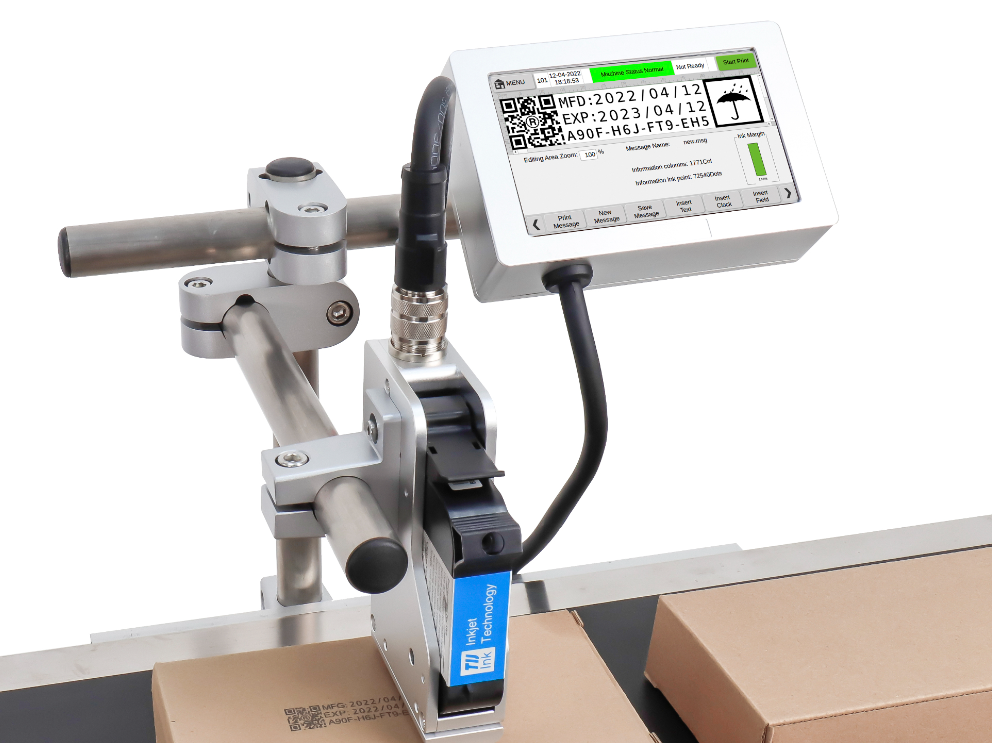In today's fast-paced business environment, the need for efficient and flexible printing solutions is paramount. The advent of high-speed variable date printing systems has revolutionized the way companies handle data printing tasks. These advanced systems offer unparalleled speed, accuracy, and versatility, catering to a wide range of industries and applications. In this article, we will explore the capabilities and benefits of high-speed variable date printing systems, shedding light on their significance and relevance in meeting the dynamic demands of the modern business landscape.

The Evolution of Data Printing
Data printing plays a critical role in various industries, including manufacturing, logistics, retail, and pharmaceuticals. Traditionally, printing large volumes of customized information, such as dates, batch numbers, barcodes, and variable data, was a time-consuming and labor-intensive process. High-speed variable date printing systems have emerged as a game-changer, offering rapid, precise, and on-demand printing capabilities.
Speed and Efficiency
High-speed variable date printing systems are designed to deliver exceptional printing speeds, ensuring efficient production processes. These systems can rapidly print large quantities of variable data, maintaining high levels of accuracy and consistency. The ability to handle high volumes of data within short time frames enables businesses to meet tight deadlines and optimize their overall operational efficiency.
Variable Data Flexibility
One of the key advantages of high-speed variable date printing systems is their ability to accommodate variable data. Each print can be customized with unique information, such as sequential numbers, expiration dates, lot codes, or personalized content. This flexibility enables businesses to implement traceability measures, enhance product labeling, and personalize marketing materials. The ability to quickly and accurately print variable data adds a layer of versatility that is essential in today's competitive market.
Print Quality and Clarity
High-speed variable date printing systems prioritize print quality, ensuring legibility and durability of the printed information. Advanced technologies, such as thermal inkjet or laser printing, guarantee sharp and clear prints, even on challenging surfaces. The ability to produce high-resolution prints enhances product branding, facilitates accurate inventory management, and strengthens overall customer satisfaction.
Integration and Automation
Modern businesses strive for seamless integration and automation across their operations. High-speed variable date printing systems can be seamlessly integrated into existing production lines, packaging machines, or labeling systems. This integration enables real-time data transfer, eliminating manual data entry errors and streamlining the printing process. The automated nature of these systems reduces human intervention, minimizing the risk of errors and enhancing overall productivity.
Compliance and Regulatory Requirements
In industries where compliance and regulatory requirements are stringent, high-speed variable date printing systems prove to be indispensable. These systems can easily incorporate date coding, batch numbers, or expiration dates that adhere to specific industry standards. By ensuring compliance with labeling and traceability regulations, businesses can avoid costly penalties, safeguard product integrity, and protect consumer safety.
Conclusion
High-speed variable date printing systems have transformed the landscape of data printing, providing businesses with efficient, accurate, and versatile solutions. From rapid printing speeds to variable data flexibility, these systems enable companies to streamline operations, enhance product labeling, and meet regulatory requirements. As technology continues to advance, high-speed variable date Inkjet Pritner will remain at the forefront of data printing, helping businesses stay competitive in a fast-paced and data-driven world.
评论
发表评论